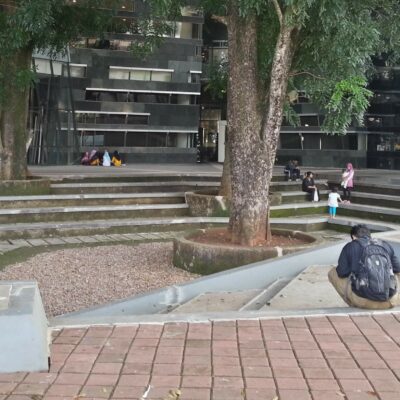Jayani Nadarajalingam, Lecturer, Political Programs, Melbourne School of Government; and
Dr Zim Nwokora, Senior Lecturer, Politics and Policy Studies, Deakin University
Constitutional democracies around the world are facing dramatic challenges to governance, driven by longstanding problems becoming more urgent in the present day, such as economic inequality, the climate crisis and national identity.
In older democracies such as the US, UK and India, a result has been the rise of populism in a variety of forms, on both the ‘right’ and ‘left’ of politics. Populism may also be on the rise in some of the newer democracies of the Global South, compounding other crises of legitimacy they face.
Populism in twentieth-century Europe was a precursor to the collapse of democratic constitutions in Germany and Italy. Should we be just as worried about the potential for populism today to destroy constitutional democracy in its modern form?
More generally, the serious problems confronting democracies at present might lead us to ask whether their constitutions can survive and perform effectively despite these challenges. To put it another way, how resilient are democratic constitutions?
The notion of constitutional resilience
The notion – or perhaps, more specifically, the evaluative criterion – of resilience seems a useful way to begin to think about how democratic constitutions perform when they are confronted by major challenges. Resilience in this context incorporates, at the very least, ideas about the capacity of constitutions to survive or endure. ‘Resilience as survival’ is a thin measure of resilience.
But resilience also goes beyond this to incorporate more expansive notions of what constitutions can and should do, particularly as they face major, often unanticipated challenges and crises. Going beyond mere survival takes us to thicker accounts of resilience. There is likely to be contestation in relation to what exactly constitutes resilience in this sense.
Let us suppose that a constitution that is resilient in a thicker sense can withstand challenges and crises while remaining ‘true to itself’ i.e. to its central mandates and values. In other words, the constitution maintains its “essence” even as the country travels through troubled waters. This does not mean the resilient constitution remains wholly unchanged in the face of such challenges. It may change, perhaps even radically, in response to changing social and political contexts. But such change will be consistent with the constitution’s underlying mandates and values.
The notion of resilience also suggests a way of thinking about constitutions that highlights the ways in which the various institutions set up by a constitution – such as parliament and the executive for example – fit and work together. In short, resilience is a property of, or criteria that applies to, a system of inter-connected institutions.
Thus, the notion of “constitutional resilience” has some obvious attractions. But, for it to have some practical use, it needs to be developed, refined and put into context. Below we discuss some of the questions with which the study of constitutional resilience needs to engage.
Modelling Resilience
What does a resilient constitution look like? Though we often know one when we see it, the study of constitutional resilience needs to do the hard work–both empirical and theoretical–of advancing a set of criteria that enable us to assess resilience and, on this basis, to describe one constitution as “more resilient” than another (all other things being equal).
To give an example, some commentators argue that the presidency of Donald Trump shows the resilience of the US constitution. According to this narrative, a rogue president has been constrained by the checks and balances of the constitution, culminating in the ongoing effort to remove him from office through the constitutionally provided mechanism of impeachment. “The president is a problem, but the underlying constitutional system is working,” is the gist of this argument.
Is this a valid story? To determine whether this is so, we need to have some way to test such narratives with well-formulated criteria of constitutional resilience.
Resilience and Values
But is resilience in the eye of the beholder? One of the risks with the notion is that it becomes entangled with the observer’s values and partisan preferences. Demonstrations of a constitution’s “resilience” become, from another point of view, evidence of its “rigidity.” “Attacks” on a constitution which undermine its resilience are also examples of “democracy” in action. Thus, supporters of President Trump argue that the constitutional “problem,” to the extent that there is one, is the unwillingness of the president’s political opponents to accept the legitimacy of his election.
Furthermore, we must also be careful to distinguish between the resilience of specific institutions that are established by the constitution and the resilience of the constitution as a whole.
Is there a way to progress beyond deeply contested interpretations of events to a more objective set of criteria for “resilience,” around which both the supporters and opponents of a particular party or leader can coalesce?
Another related problem is working out a notion of resilience that has salience across different countries and contexts. A huge risk with trying to define “resilience” in general terms and with universal application is that the resulting concept may work much better for some countries (e.g., the older and richer democracies of the Global North) than it does for others (e.g., newer and poorer democracies in the Global South).
At the same time, we must be careful not to universalise from the older democracies of the Global South to the newer ones. Resilience may supply an appropriate perspective when assessing the constitutional context of contemporary India, for instance, but it may be much less useful in relation to Bangladesh, where it might be better to focus squarely on the institutional weakness of the legislature.
Securing Resilience
What can be done to boost resilience? Assuming we can make progress on the conceptual issues noted above, the major problems to tackle are then practical ones—that is, how to improve constitutional resilience.
Mechanisms of resilience, which help to protect the essence of a constitution and its fundamental mandates and values, may include things such as particular constitutional law provisions, norms and institutional culture.
The work to boost and maintain the resilience of a constitution will involve a variety of actors, including: political leaders, legislatures and parties; administrative bodies; the courts; the people; the military; universities; the media; social movements, communities and regions; and various international actors such as the UN, EU, World Bank and global powers such as the US, China and India. Some of these players would not normally be described as “constitutional actors” in an orthodox sense.
Although the work to secure resilience is ongoing, it is especially urgent for countries in the midst of a constitutional crisis—whether that crisis is occurring at present (as in Chile, where protests around public services and inequality have triggered calls for a constitutional convention); or whether the crisis happened fairly recently, as in Kenya, where a crisis was triggered by a disputed presidential election result in 2017, and the country is progressing, tentatively, away from it; or whether the current political climate seems to be ripe for a major crisis, as in India due to the dominance of the Modi BJP government, or Nigeria where ethnic tensions remain worryingly acute.
It should be noted that in some contexts constitutional resilience may not be a desirable goal. This would be the case when the fundamental mandates and values of a constitution – such as those contained in the constitutions of South Africa during Apartheid – are such that we would not want it to endure.
Main image: Protestors around the world use Guy Fawkes masks to indicate anti-establishment aims. Source: Flickr, Jason Hargrove




